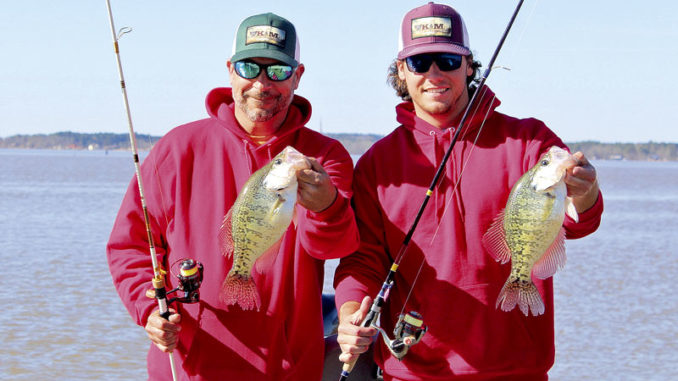
South Louisiana duo has learned plenty about sac-a-lait by fishing plenty of places where they’re better known as crappie or slabs.
The Crappie Express is making its mark.
Maybe “splash” would be a better word.
Tim Hebert of Thibodaux and Andre Smith of Schriever have always been fishermen, but in recent years they have teamed up and taken on a new challenge — catching crappie — with remarkable results. In tournaments around the South, they regularly finish in the money, and they have challenged for Angler of the Year honors on several tours.
While they’ve had a tremendous impact on the sport, the two south Louisiana anglers still haven’t been able to get tours like American Crappie Trail or Crappie Masters to follow their south Louisiana influence and change names properly to the American Sac-a-lait Trail or the Sac-a-lait Masters — but give them time.
Crappie fishing is a growing sport with new gear, equipment, techniques and competitions every day. Hebert and Smith have been in the middle of it, having taken their show on the road and found great success in competitive fishing.
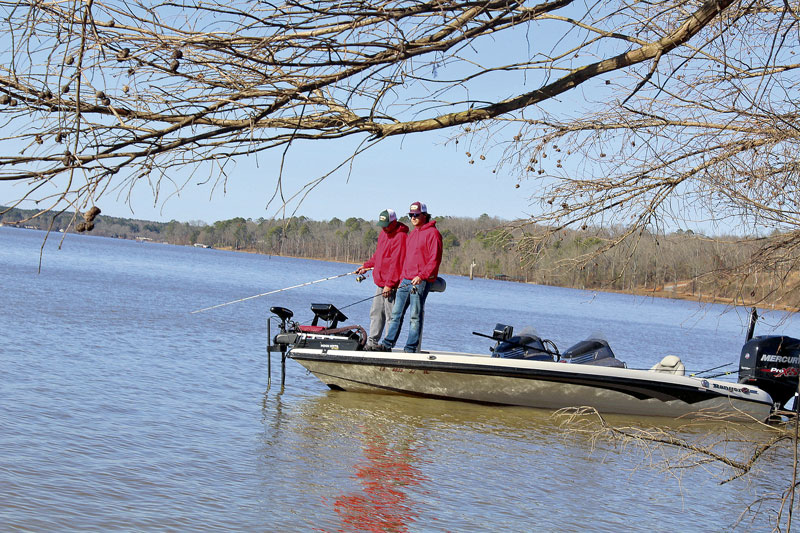
Feeling the “thump”
But they still love coming back to their home waters and feeling the “thump” of a slab crappie. And this Cajun Crappie Express can also take you to a new level of fishing success if you follow their tips and tactics.
“There are some obvious differences in fishing competitively and fishing just for fun in the way you approach it, but really, catching crappie is catching crappie,” Hebert said. “You do the same things, and you use the same baits. It’s just a different approach.”
Hebert and Smith are worlds apart in some ways, but tight-knit in others. Hebert is 42 years old; Smith is 22. They have bass backgrounds and have known each other for years.
“I’ve been fishing for years and was friends with his dad,” Hebert said. “Since he was a little kid, he would always go with us, and he was the one that would always catch fish. You could take him to a mud hole, and he’d catch a fish. As he got older, he would always come fish with me. When I started talking about going to fish crappie tournaments, I wanted him to try it, but he was skeptical.”
One of the main obstacles was that while they could catch fish in their shallow south Louisiana, most tournaments are held on big, deep reservoirs. Then something came along that changed things: the LiveScope.
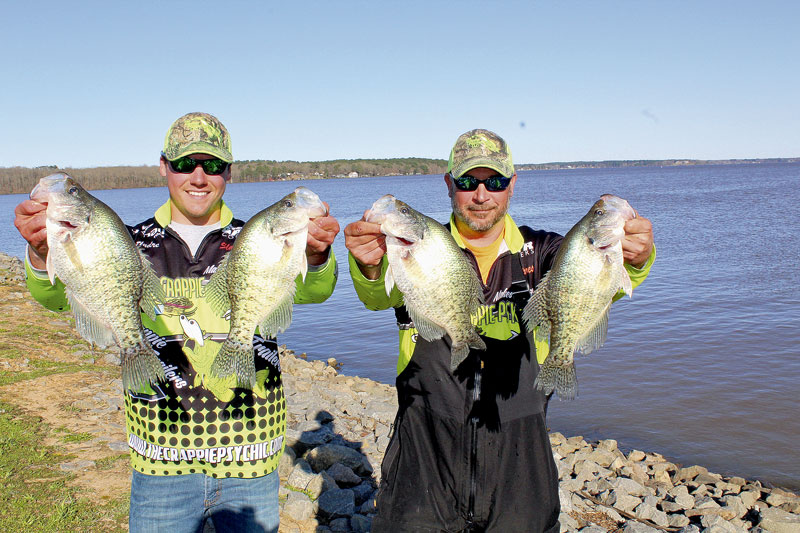
Game changer
“When I saw Tim using that, it was a game changer,” Smith says. “I felt confident we could compete. Where we fish, we have no maps, no contour data. We just fish the bank and the run-outs. But with this, we can find fish anywhere.”
“At home on waters like Lake Verret and Bayou Black, we know what to look for and where the fish will be. You don’t have to have electronics to fish areas like that. My best tip is to just spend some time finding the areas that hold the fish and stay in the shallow water. The key for us finding fish around home is to find the grass. Find grass that is near a canal or a bayou that has a little cut running into the marsh.”
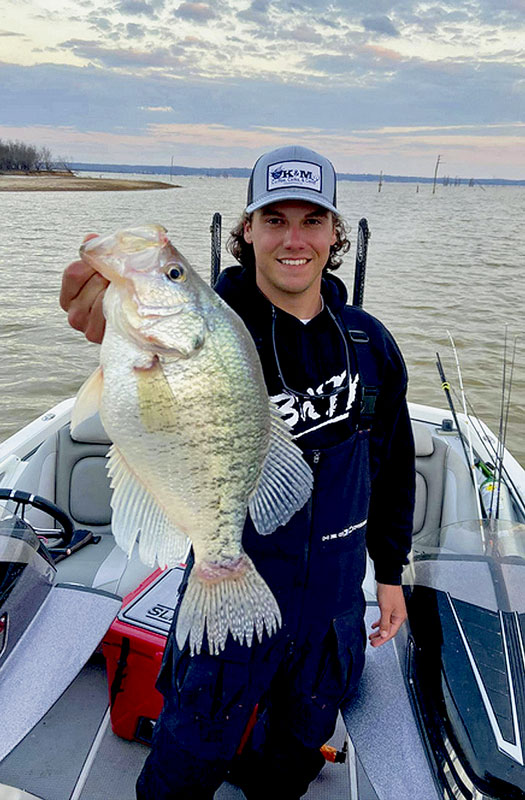
When you find those spots, the best time and place to catch them is on a falling tide when the water is dropping out of the marsh and bringing all the food to that one place where the cut meets the bayou.
“They’ll stack up there, and they’ll be hungry,” Smith said.
Hebert said that knowing each other makes them a good team, and that’s important anytime you fish with someone, in a tournament or just for fun. You need to know what to expect from each other if you are serious about catching crappie.
“We give each other a hard time, but it’s all in fun,” Hebert says. “We are serious about catching fish, but we can’t have the big head when we are in the boat together. Are we competitive against each other? Yes. But that brings out the best in both of us. He runs the trolling motor a lot because, hey, he’s younger, and he’s good at it. Sometimes I fish and he nets, and sometimes he fishes and I net.
“In practice, we do something that is really helpful anytime you are on the water. While we try to figure them out, I fish with one bait, and he fishes with another. Fishing different things allows us to figure them out a lot quicker. You have to know what kind of presentation they want, what kind of bait they want and how deep they are. And what worked yesterday may not work today.”
When the duo is competing and spot a big fish on the electronics, one of them will try to catch it. If the fish doesn’t spook or bite, the other one will take a turn. Maybe there’s a little something different that one does. When the second man up catches the fish, the ribbing begins pretty good.
Hebert said that lets them cover a lot of water efficiently. Covering water quickly isn’t necessarily good for catching crappie, but being efficient by making sure you cover your bases is.
Hebert said that’s one of the biggest mistakes that some crappie fishermen make. You can’t catch today’s fish on yesterday’s bait.
Change spots for bites
“Look. Today, there are sometimes five or six boats in one little area,” he said. “We may fish in some spots like that, but one of the biggest mistakes you can make is staying in one spot for a long period of time if you aren’t catching. That’s not healthy.”
Smith and Hebert fish a lot of submerged structure using their electronics, and they catch big fish that way. But they still catch fish the old-fashioned way.
“Oh yeah, you can still catch fish the same way we used to,” Hebert said. “We have changed, not the fish. At home, we fish places like Lake Verret, Grassy Lake, Lake Palourde, Bayou Black and Lac des Allemands, and we do that by sight-fishing — for the most part. You know what the fish will do from experience, and you’ve got to find them and give them what they want. When we approach laydowns or run-outs in our home waters, one of us will fish with a cork and one without a cork. The one without a cork will fish from the bottom up, and with the cork, we’ll present it a couple of feet deep. You have to use different techniques and baits to get a bite.”
The duo loves Bobby Garland Baby Shad and Slab Slayers. They go back and forth because sometimes, something as simple as a bait’s profile can make a difference.
“Being one of the younger crappie fishermen, I see a lot of increased interest in the sport, and I’m trying to help promote that,” Smith said. “We have a lot of competition from the saltwater fishing down here, but it is starting to grow. One reason is that more people are learning to catch crappie.”
One thing Smith encourages fishermen to do is to just slow down. That’s his No. 1 tip. No. 2: when you are fishing where a fish should be, keep your bait as still as possible; don’t jig it up and down. You never see a live bait jigging up and down. Swimming slowly, yes, but not jigging up and down.
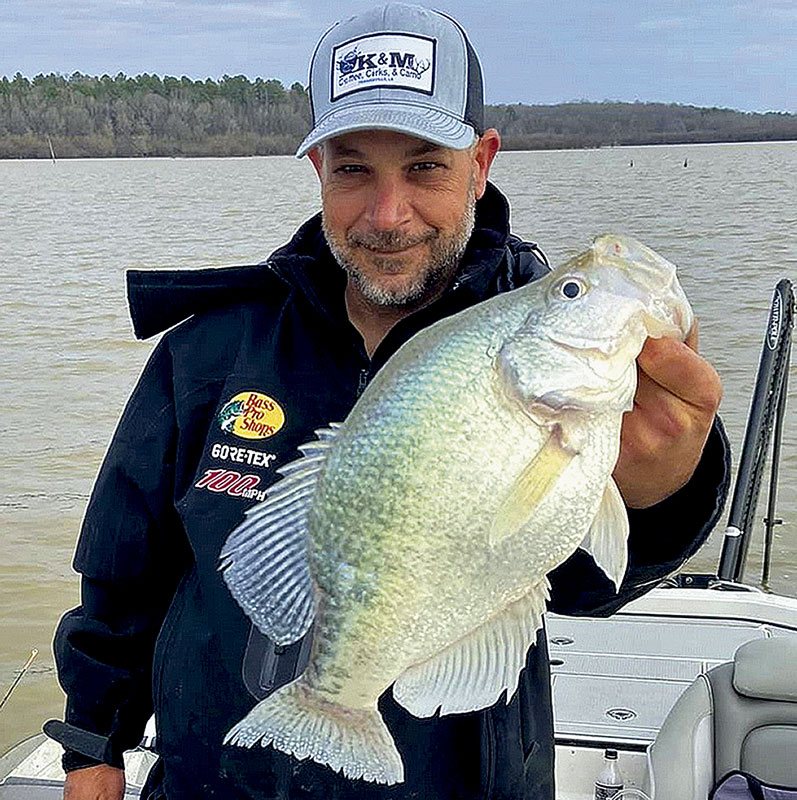
Do crappie know you’re looking?
Tim Hebert and Andre Smith depend on their LiveScope to catch bigger crappie most of the time, but especially in tournaments. But they have learned that just because you see a fish, doesn’t mean you can catch them.
In fact, big crappie are getting more and more leery. If you don’t catch them on the first presentation, most of the time, they will just swim away. Hebert has a theory about that, and he’s talked to other competitors who feel the same way.
“Having LiveScope in the boat is like having a teacher with you,” he said. “You can learn so much from it about fish behavior as well as catch them, but the fish are adapting. Trust me, I’m not just saying that. There’s something about when you have them in the scope for very long, I think they sense it. I don’t know if they can feel it pinging off them or what. But fish have a lot of sensory ability that we don’t totally understand.
“We have started seeing fish out fairly far away, then taking the scope off them. When we think we are closer, we’ll scope them again and get the bait to them as quickly as possible. That first cast is the money cast.”


